Spiders: not everyone is scared-stiff by them. In fact, some people actually like to get up close and measure our eight-legged friends in order to find out what's the biggest spider in the world. In some cases, this can be extremely brave, with some pretty venomous species with very sharp teeth (who don't take kindly to being poked and prodded) making it on to this list.
We would like to point out, however, that most of these spiders aren't the kind you see on your bedroom wall at night, so please don't worry about having a massive bird-eating house guest come to stay.
As your mother always says, they are more frightened of you than you are of them.
10. Sand-dwelling huntsman spider -Cerbalus aravaensis
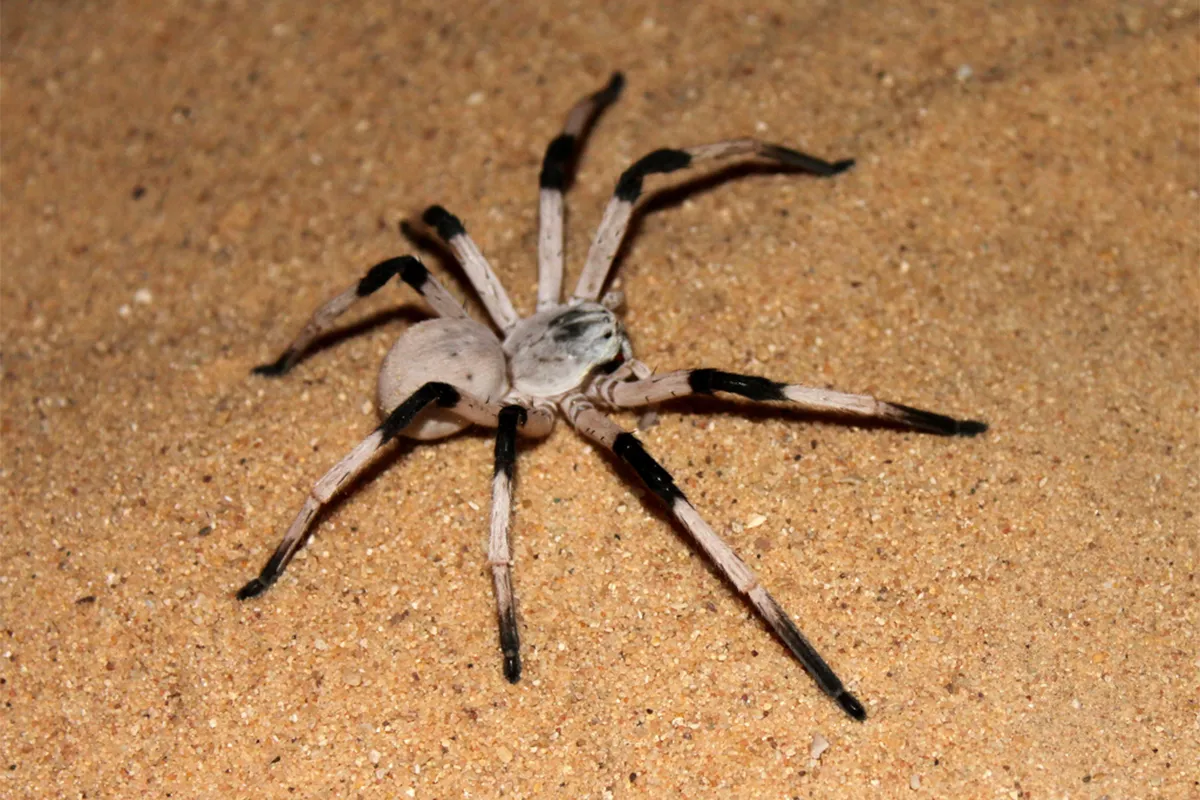
This huntsman spider is found inhabiting sand dunes in the south of Israel and Jordan, and an adult can have a leg span of up to 14cm. It is a nocturnal species that lives in an underground den, hidden from predators.
9.Brazilian wandering spider - Phoneutria fera
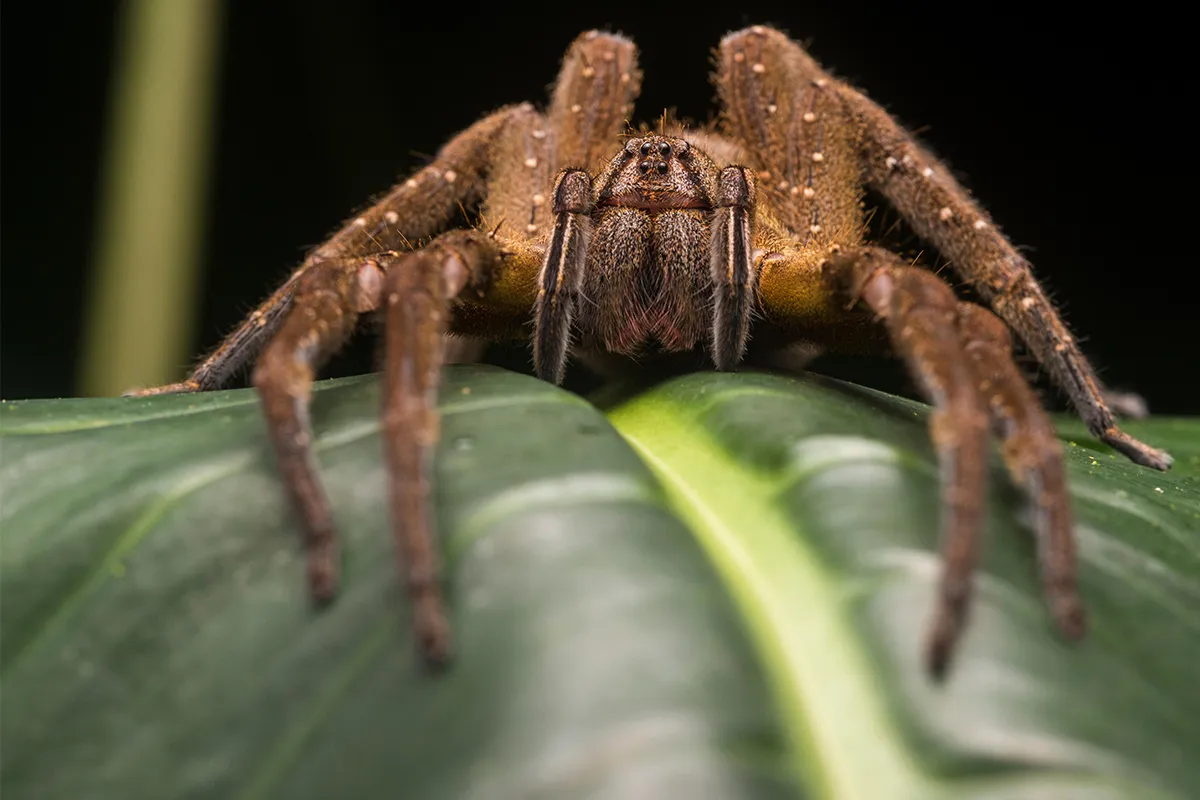
This highly venomous species spends a lot of its early years hidden in vegetation, but likes to crawl around the ground once it gets big enough. The wandering spider's legs can grow up to 15cm too, so it should be pretty easy to spot an adult in daylight.
8.Camel spider -Solifugae

The camel spider isn't strictly a spider at all, as it does not spin a web. Nor is it technically a scorpion, as it does not possess a tail section on its body. But it is an arachnid with 8 legs, and those legs can span up to 15cm.
7.Colombian giant redleg tarantula - Megaphobema robustum
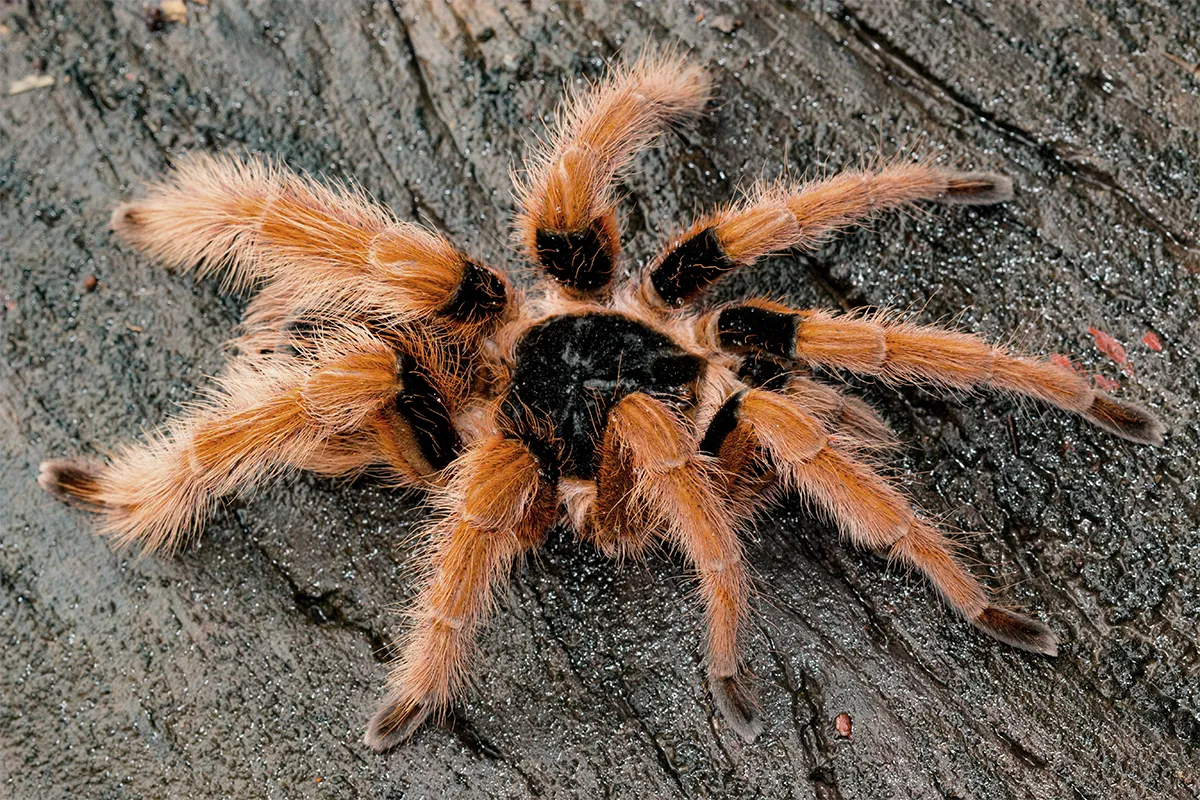
As the spiders get bigger, they tend to get furrier too. This aptly-named 'redleg' spider is a handsome creature, with stunning markings. They feed on large insects and small mice, and live in the tropical rainforests of South America. Even though they are quite large (with a leg span of up to 16cm), they are shy and defensive in nature.
6. Face-sized tarantula - Poecilotheria rajaei
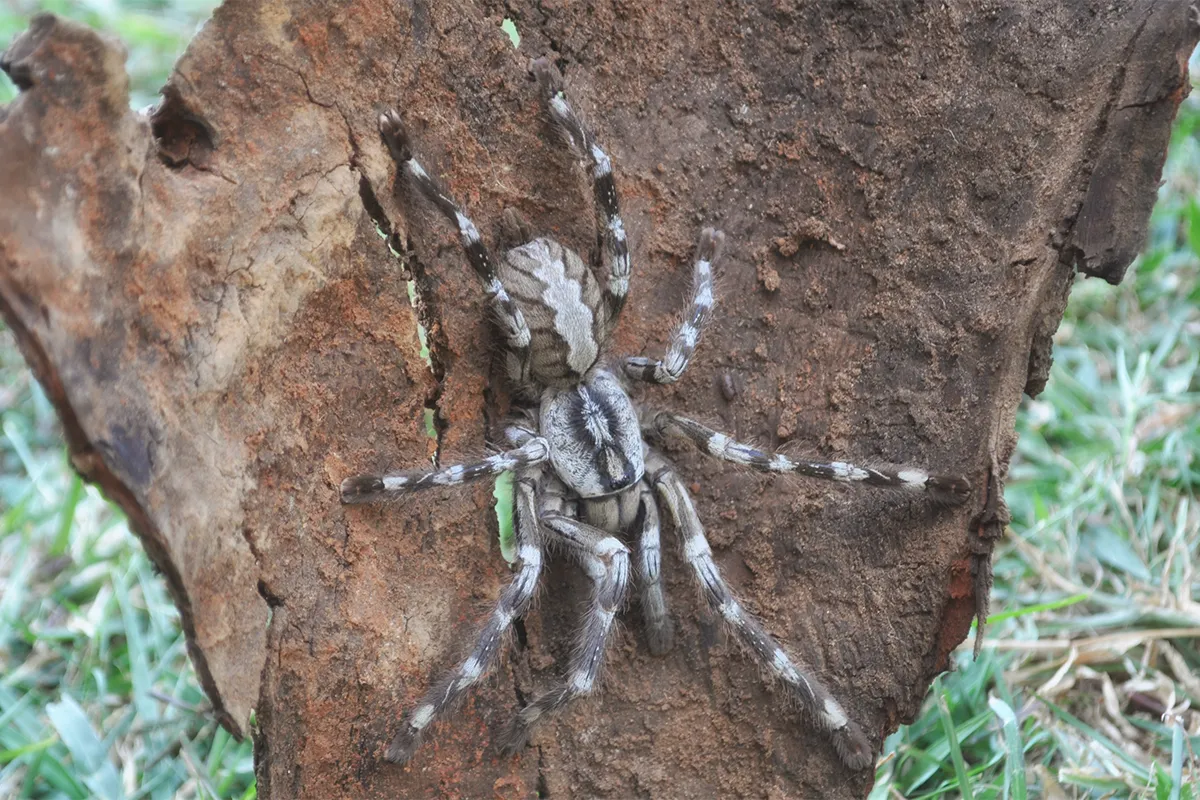
As this tarantula’s name suggests, its 20cm leg span is big enough to cover a whole human face. Quite why you would let this get that close to you is anyone's guess. It was first classified in 2012, and carries enough venom to kill small rodents and lizards.
5.Chaco golden-knee tarantula -Grammostola pulchripes

The beautiful golden knee tarantula lives up to its name, with beautiful markings on its limbs. The spider's leg span can reach 17 to 20cm, and it is equipped with some large fangs. However, this is another species that is popular as a pet, due to its calm nature.
4.Brazilian giant tawny red tarantula - Grammostola anthracina
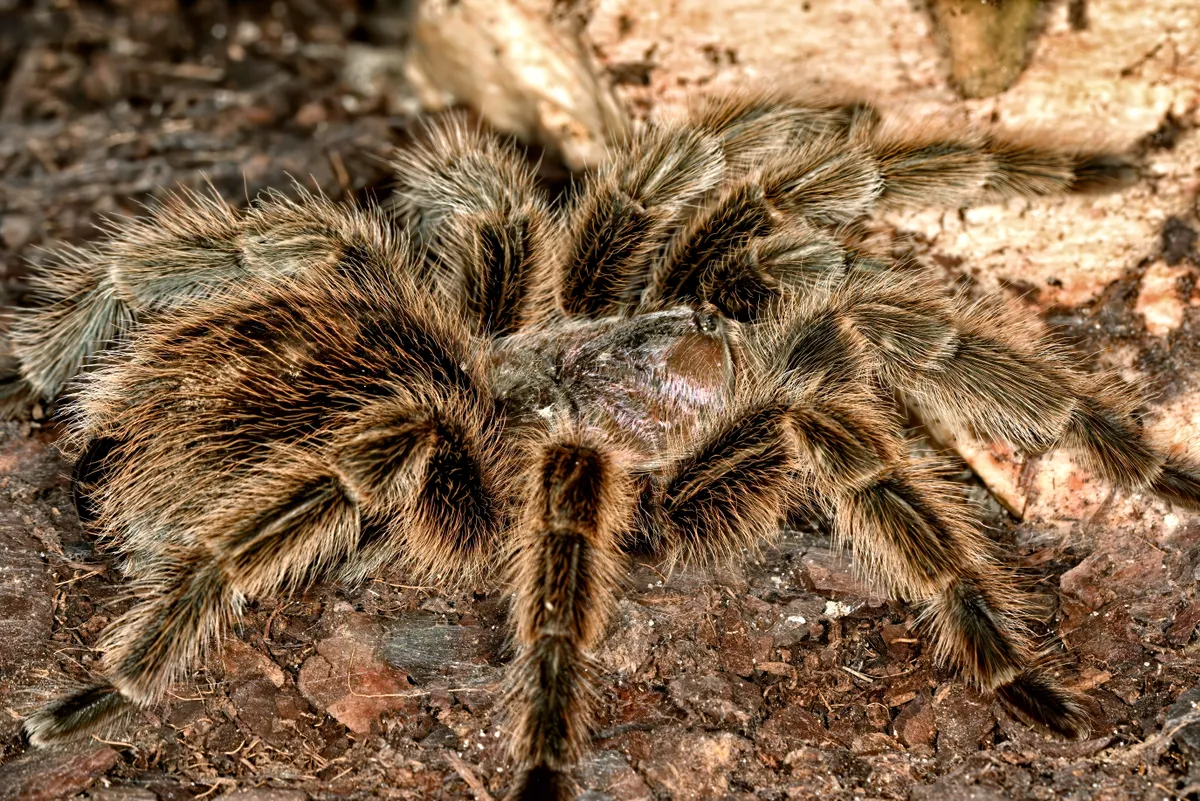
Inhabiting large areas of South America, the giant tawny red tarantula is thought to be one of the longest-living tarantulas, with some reported to live up to 20 years. With a leg span of up to 23cm, it is also one of the larger species.
More images from BBC Science Focus:
- The loudest animals on planet Earth
- Venus-Jupiter conjunction in images
- Tiny killer sea sparkles image wins first Woman Science Photographer of the Year
- The most extreme towns in the world
- Welcome to the most dangerous waters on the planet
3. Brazilian bird-eating tarantula-Lasiodora parahybana
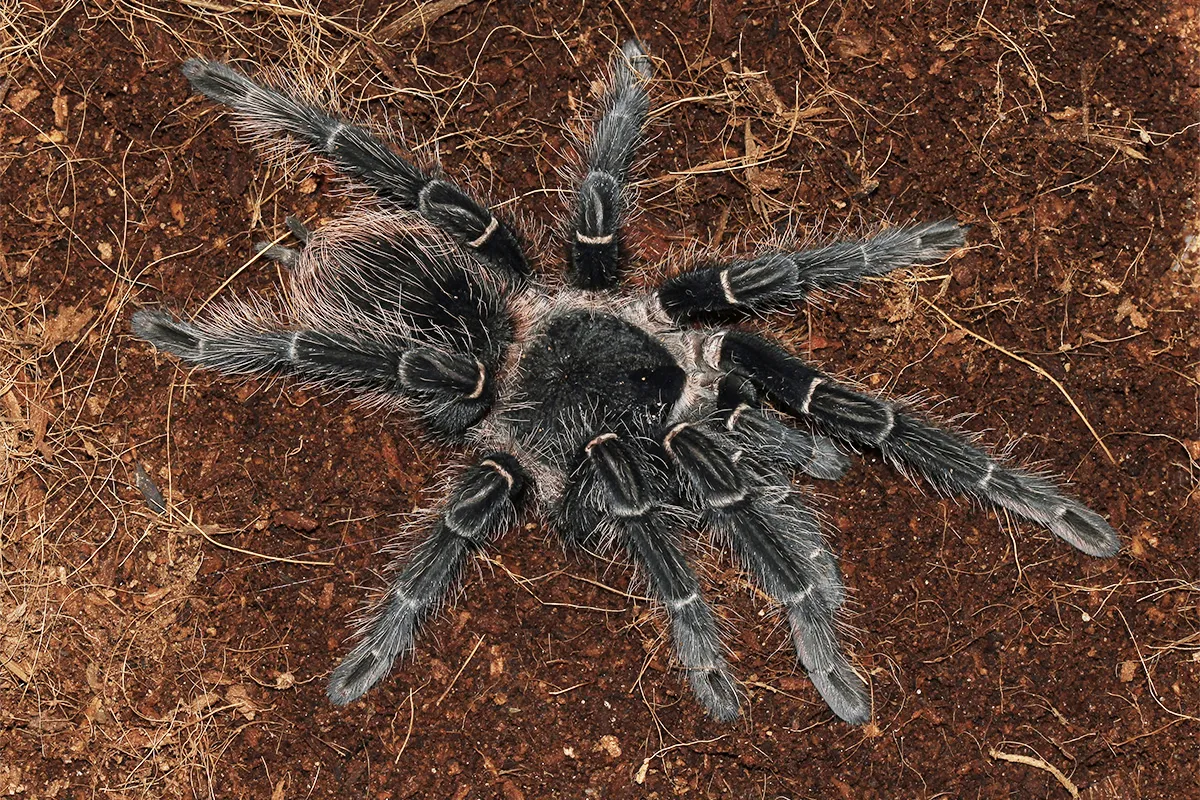
This species is quite docile, hence its popularity as a pet. It will only deliver a nasty bite if provoked, and even that is not dangerous to humans. Males tend to have longer legs, and their span can reach up to 28cm.
2. Goliath bird-eatingtarantula-Theraphosa blondi
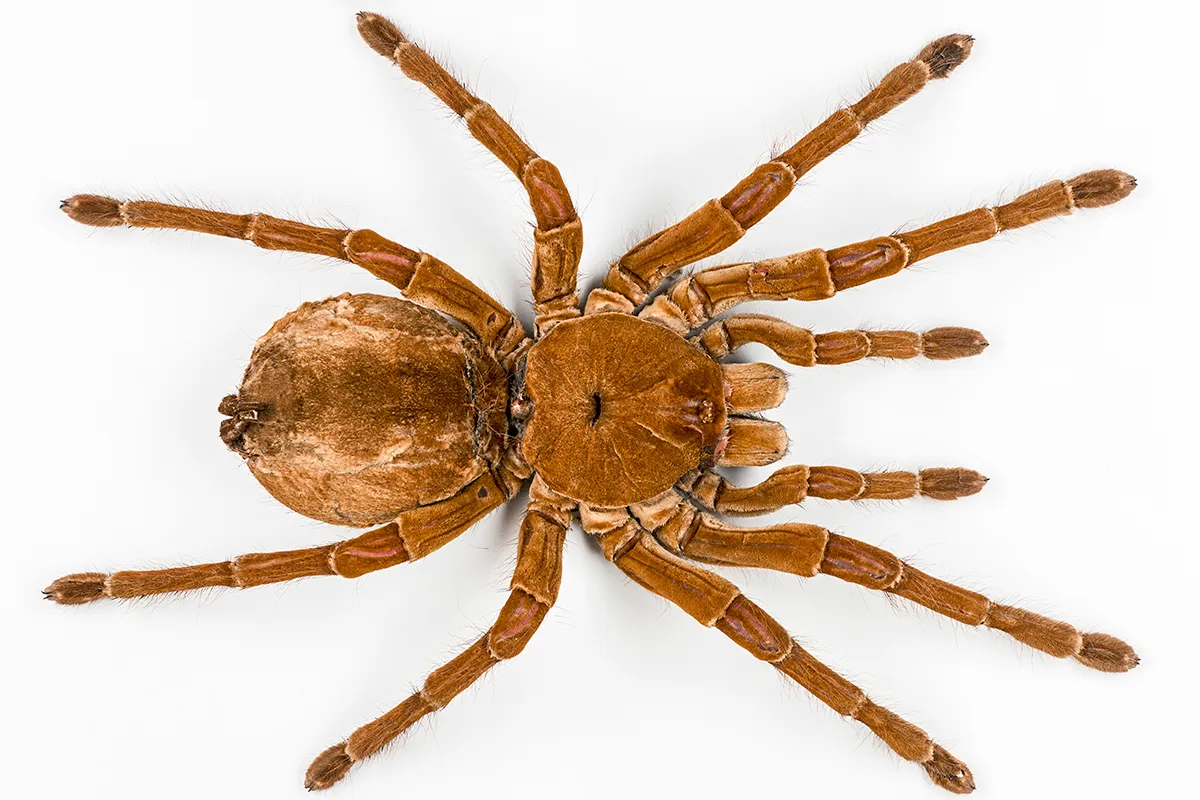
Despite its fearsome name, this species of spider rarely hunts or feeds on birds. What is fearsome though is a leg span of up to 28cm. Unlike a lot of other spiders and tarantulas, the females do not eat the males during mating.
1.Giant huntsman spider -Heteropoda maxima
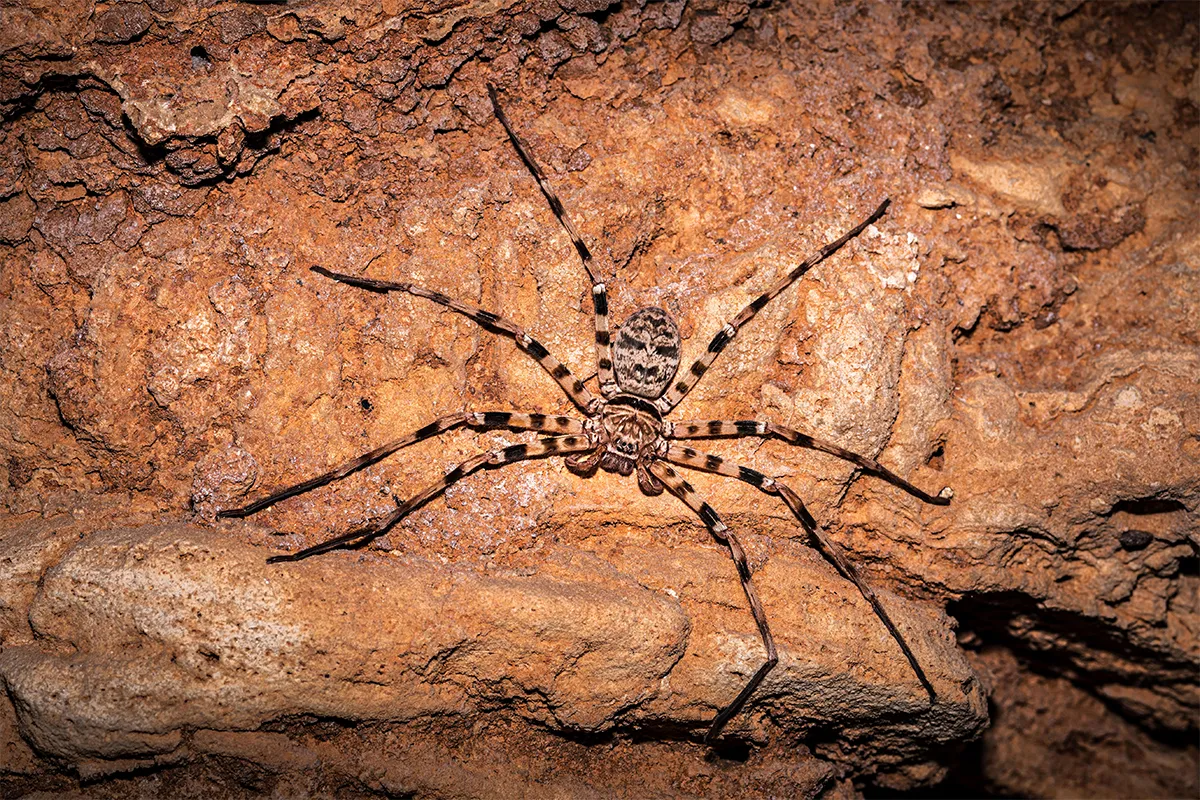
The largest spider on our list, the giant huntsman can have a leg span of up to 30cm. The species is mostly found in Laos, and is thought to mostly live in caves.
Read more: